Can SF Save the World From Climate Change?
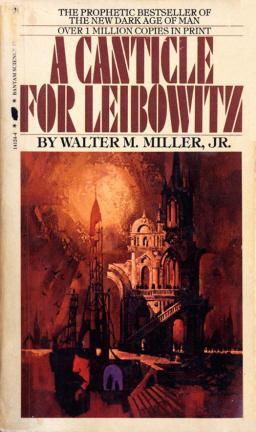 Since its inception in the 19th Century, science fiction has inspired technological innovation and progress, utilizing creativity to prod the minds of scientists and engineers into designing wonders beyond the factories and smokestacks of the Dickensian world. Jules Verne and H.G. Wells, the godfathers of SF, imagined submarines, airships, rockets, spacecraft, and even atomic energy, and their “science fantasy” stories inspired generations of scientists, inventors and engineers, not to mention countless artists and writers.
Since its inception in the 19th Century, science fiction has inspired technological innovation and progress, utilizing creativity to prod the minds of scientists and engineers into designing wonders beyond the factories and smokestacks of the Dickensian world. Jules Verne and H.G. Wells, the godfathers of SF, imagined submarines, airships, rockets, spacecraft, and even atomic energy, and their “science fantasy” stories inspired generations of scientists, inventors and engineers, not to mention countless artists and writers.
In the early 20th Century, the Golden Age of SF helped pioneer many of the modern technologies we now take for granted. Arthur C. Clarke conceptualized the geostationary satellite. Isaac Asimov laid the groundwork for robotics and artificial intelligence. E.E. “Doc” Smith’s Lensmen novels inspired the US Navy to create the first naval combat information center. In the early 1980s, at a time when personal computers were still in their infancy, William Gibson imagined cyberspace.
At the same time, SF writers have also warned us about the dangers of our rapidly changing world. Pre-dating Verne and Wells, Mary Shelley’s Frankenstein is a bleak cautionary tale of what can happen when scientists try to alter life itself (a warning that seems more prescient than ever in an age of cloning and GMOs). In response to the Second Industrial Revolution, E.M. Forester wrote the first modern dystopia, The Machine Stops, a short novel that depicts a future race of humans that have become helpless, fat, and slug-like due to their complete reliance on technology.
And then, of course, there are the classic dystopian tales, warning us of the dangers of taking social and political ideologies to their extreme ends: A Brave New World, 1984, Animal Farm, and Yevgeny Zamyatin’s We. Similarly, the post-apocalyptic novel A Canticle for Leibowitz, penned by Walter M. Miller during the height of the Cold War, warns of the dangers of nuclear proliferation coupled with imperialism.
Occupying the space in the middle — taking aspects of both hard SF and dystopias — are the social SF books that grew into prominence during the Civil Rights Movement and counter-culture era of the 1960s. Bradbury, Vonnegut, Le Guin, and others used the tropes of SF to make readers question everything from race relations and gender bias to individuality, religion, and sexuality. Even some of the Golden Age authors contributed in this capacity. My own father has told me how Robert Heinlein’s Stranger in a Strange Land helped him reconcile his place in society after returning from the Vietnam War.
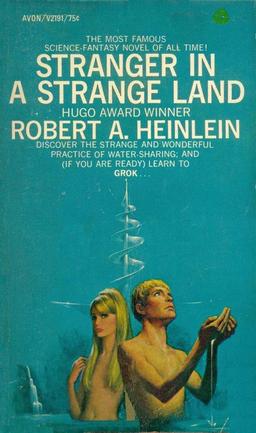 The great SF writers of the past — finding that perfect balance between imagination and reasoning — created visions of potential futures that forced us to question the things we took for granted, that set new boundaries for what was possible, and shattered long-standing paradigms of thinking. But we’re in the 21st Century now and the world faces new changes, new problems — paramount among them climate change. No other force poses such an imminent danger to human civilization as we know it. This is the defining moment of the human race in the 21st Century, and yet SF writers are somehow behind the times, not ahead of it.
The great SF writers of the past — finding that perfect balance between imagination and reasoning — created visions of potential futures that forced us to question the things we took for granted, that set new boundaries for what was possible, and shattered long-standing paradigms of thinking. But we’re in the 21st Century now and the world faces new changes, new problems — paramount among them climate change. No other force poses such an imminent danger to human civilization as we know it. This is the defining moment of the human race in the 21st Century, and yet SF writers are somehow behind the times, not ahead of it.
Fed up with government inaction, it’s not SF writers but scientists and activists who are taking action all over the world. James Hansen, longtime NASA climatologist and one of the first people to warn the world about global warming with data to back it up (all the way back in 1988), has retired from NASA in order to challenge the US government in court on its failure to regulate greenhouse gas emissions. Author and activist Bill McKibben has founded 350.org, an organization that aims to weaken the fossil-fuel industry by guiding college campuses and municipalities in divesting their financial endowments from fossil fuel corporations.
Americans — left wing “tree huggers” alongside cowboys, ranchers and conservative Tea Partiers — are marching on The Capitol and at pipeline worksites to block the construction of the Keystone XL Pipeline, a project politicians are trying to greenlight to transport tar-sand oil from Canada to the Gulf of Mexico (crossing through private property and one of the most vital and fragile US aquifers) where it would be sold on the open, global market. Similarly, first nation tribes are marching on oil pipeline sites in Canada, and indigenous communities in Australia, India and South America are standing up against the fossil fuel industry to protect their local environment. Sensing the need for this sort of drastic social activism to enact any significant change, the Sierra Club recently removed its longstanding ban on civil disobedience.
The question is, where have SF writers been during all of this social upheaval? How is the world going to move forward without SF voices to provide that groundbreaking combination of visionary imagination and reasoning?
Back in 2005, McKibben made a plea to artists and writers to figure out a way to tackle the issue of global warming and make it part of our social conversation. What we need, he said in his article published at Grist.org, are “visions of what it might feel like to live on a planet where somehow we use this moment as an opportunity to confront our consumer society, use it to begin the process of rebuilding community.”
It seems like a righteous cause that should be right in the wheelhouse for SF writers, and yet the body of SF work produced over the last several decades dealing with climate change has been underwhelming. It is out there, but if SF is going to live up to its storied past and lead us back from the brink of ecological calamity, we as writers and a community are going to have to work harder and break from our own paradigms.
The New Dystopian, Post-Apocalyptic Fiction
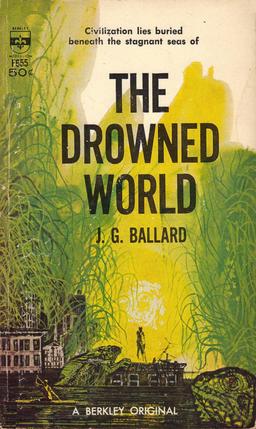 It is unfair to say SF writers have been silent on the topic of climate change.
It is unfair to say SF writers have been silent on the topic of climate change.
In fact, back in 1962, well before any scientists were warning us about the greenhouse effect, J.G. Ballard released The Drowned World, a novel about rising sea levels. While the cause of the disaster in his novel is an increase in solar radiation, not greenhouse gasses, the novel’s premise typifies most of the contemporary SF dealing with climate change: ecological disaster leads to a post apocalyptic, sometimes dystopian, setting in which the characters must struggle to survive. These varieties of stories, like traditional dystopian and post-apocalyptic tales, function largely as warning tales, and while they haven’t been abundant, they are out there.
John DeNardo, editor of the Hugo Award winning fanzine SF Signal, picked up on a recent “mini-trend of flood-related sci-fi” and compiled a list published in Kirkus Reviews back in August of 2012. Independently, climate change activists and SF fans have been compiling reading lists on Goodreads and SF forums.
Notable titles that fit the post-apocalyptic format include Bruce Sterling’s Heavy Weather (1995), Kim Stanley Robinson’s Forty Signs of Rain (2003), Stephen Baxter’s Flood (2008), Tobias S. Buckell’s Arctic Rising (2012), and Paolo Bacigalupi’s Nebula and Hugo award winning novel The Windup Girl (2009), as well as his two YA titles, Shipbreaker (2010) and The Drowned Cities (2013).
Bacigalupi, in fact, is emerging as the leading voice when it comes to addressing climate change in SF. The Windup Girl, more so than any of the other titles, pushes past the standard post-apocalyptic trope and presents to the reader a future where human society has adapted to rising sea levels, high global temperatures, and a severely taxed food supply. It’s not a pretty future, but it moves beyond merely trying to warn or scare readers and offers a glimpse of potential solutions (both good and bad) to the challenges humans may soon face: sea walls and massive pumps to keep oceans at bay, kink springs and animal labor to power transportation and industry, and genetic engineering to grow crops that can survive high temperatures and blight.
Collectively, the importance of these books is that they are slowly bringing the reality of the situation to readers, which is the first step toward taking action. “I do think SF has a place in enacting social change, inasmuch as anything that gets people thinking about the issues will,” says DeNardo. “Before people are provoked into action, they have to know that issues exist. If SF helps people become aware, even by associating fictional stories with real life events, that’s a good thing.”
A good thing indeed, but if scientists are right — and there has never been a clearer consensus amongst the scientific community — then this sort of discussion is too little, too late, because it turns out global warming is already here.
The Reality We Face
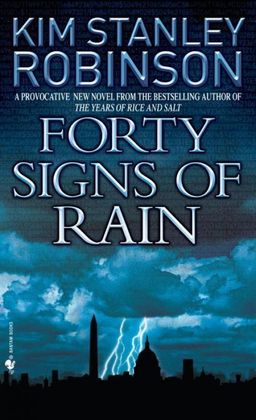 While SF writers have been slow to get into the conversation, scientists and activists have been ringing the warning bells loudly for over three decades now, and no two people have been more effective at bringing climate change into the public discourse than the aforementioned James Hansen and Bill McKibben.
While SF writers have been slow to get into the conversation, scientists and activists have been ringing the warning bells loudly for over three decades now, and no two people have been more effective at bringing climate change into the public discourse than the aforementioned James Hansen and Bill McKibben.
McKibben has authored multiple non-fiction books on climate change, the earliest being The End of Nature in 1989, but in many ways his books were preaching to the choir, to educated, scientifically-minded readers who were already savvy to the dangers of global warming. Rather, it was McKibben’s August 2012 article in Rolling Stone, “The Reckoning,” that laid out the dangers of climate change in clear terms to a massive, general audience. In the article, McKibben presents three numbers that punctuate the dilemma we find ourselves in.
The first number is 2 degrees Celsius (3.6 degrees Fahrenheit), the consensus figure global powers agreed upon in 2009 as the highest increase in global temperature that should be allowed. While McKibben cites climate scientists who argue a 2-degree rise in global temperature is too much, that it would be catastrophic, he accepts the number as the reality of the situation.
The second number is 565 gigatons, the amount of carbon dioxide scientists calculate we can release into the atmosphere over the next several decades and still stay below that 2-degree rise in global temperature.
The third number is the frightening one: 2,795 gigatons, the amount of carbon the fossil fuel industry has in its reserves, ready to dig up, sell and burn. In other words, 5 times more than what scientists and global powers agree would be catastrophic.
The pinch, of course, is keeping that oil, gas and coal in the ground, but with an estimated value of $27 trillion dollars, there’s no chance the fossil fuel industry is going to give up their investment, and it’s no wonder they have invested so heavily in running a campaign to deny climate change and muddy up the issue.
Even if the fossil fuel industry were willing to give up their investment, the modern industrialized world couldn’t survive as we know it without oil and coal. Our antiquated electrical grid is designed around the idea of transporting electricity over long distances, from massive powerplants — most of which still burn coal or other fossil fuels — to our cities and communities. This alone accounts for 13 percent of the world’s greenhouse emissions, according to a recent emission flowchart released by ECOFYS.
Manufacturing and other industrial facilities pump out another 29 percent. Automobiles account for 10.5 percent. More EV’s and hybrids are hitting the roads every day, but their price point is simply too high for most people to afford.
And while cars and industry are the most publicized culprits, they are hardly alone in culpability. Big agriculture has turned into a mono-crop culture dependent on fertilizers, pesticides and herbicides derived from petroleum, creating an arms race against Mother Nature. Continued fertilizer use leads to soil fatigue, which leads to requiring more potent fertilizers. Weeds and insects adapt to poisons, requiring more potent poisons with dangerous side-effects, such as the massive bee die-off we’re currently witnessing.
And then there are the non fossil fuel related sources. Livestock emissions — cow flatulence and manure — account for 5.5 percent of the world’s greenhouse emissions. Deforestation and other land use changes account for 15 percent. Rotting landfills and wastewater facilities account for 3 percent. Every bit of our infrastructure spews greenhouse gasses into the atmosphere.
But what do those numbers really mean?
Our target as of 2009 was to keep global temperatures from rising above 2 degrees Celsius. The newest report from the UN Intergovernmental Panel on Climate Change (IPCC) projects a temperature increase between 3.7 and 4.8 degrees Celsius by 2100 if we maintain the status quo. Already, we’ve raised our average global temperature by 0.8 degrees, and as McKibben states, the results have been devastating:
A third of summer sea ice in the Arctic is gone, the oceans are 30 percent more acidic, and since warm air holds more water vapor than cold, the atmosphere over the oceans is a shocking five percent wetter, loading the dice for devastating floods.
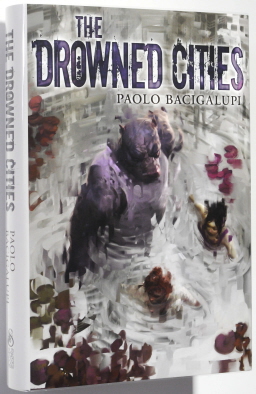 McKibben borrows the loaded dice metaphor from Hansen, who coined the term “climate dice” back in the 80s. The idea is that while no single weather event can be wholly attributed to global warming, the chances of severe weather events increase as average global temperature increases. In an August 2012 paper from NASA’s Goddard Institute for Space Studies, Hansen and his colleagues caused a storm of controversy by pointing out that the dice have become more loaded with each of the most recent passing decades. Critics tried to disprove the validity of the study by pointing out that it only looked at data from six decades (1951-2011) outside the context of long-term historical global climate changes.
McKibben borrows the loaded dice metaphor from Hansen, who coined the term “climate dice” back in the 80s. The idea is that while no single weather event can be wholly attributed to global warming, the chances of severe weather events increase as average global temperature increases. In an August 2012 paper from NASA’s Goddard Institute for Space Studies, Hansen and his colleagues caused a storm of controversy by pointing out that the dice have become more loaded with each of the most recent passing decades. Critics tried to disprove the validity of the study by pointing out that it only looked at data from six decades (1951-2011) outside the context of long-term historical global climate changes.
But such critics entirely missed the point. The study by Hansen wasn’t intended to prove global warming; there’s already plenty of ice core data plotting carbon dioxide levels and average global temperatures back almost 800,000 years, enough to put our recent rising trend in context and prove human activity has drastically increased the rate of rising global temperatures. Rather, Hansen and his colleagues were providing a new model for us to predict the near-term results of global warming. And what should we expect?
Frequently larger and more destructive weather events.
The extreme weather this past winter in North America (thanks to an erratic polar jet stream) is the most recent example. The massive tornado in Oklahoma City last year is another. Hurricane Sandy. Katrina. These are the types of events and storms we can expect to see more often, the storms we used to dub a “hundred year storm.”
Along with the storms are the heat waves and droughts, which lead to wildfires such as the 2011 Texas wildfires and the 2012 Colorado wildfires. Australia experienced its hottest summer in recorded history in 2013. High temperatures and drought also lead to crop loss.
A 2010 heat wave in Moscow devastated the region’s wheat crop. As reported by The Worldwatch Institute:
Within days, Russian officials announced the suspension of wheat exports, which immediately sent world prices soaring by more than a third, with follow-on effects on corn, soybeans, and the rest of the world market.
That’s the truly scary part, how inter-related these events are becoming. Safely away from the coast and the tornado belt, one can reasonably hope to avoid facing a cataclysmic storm in their hometown, but there’s no avoiding food and water shortages in our global society. There’s no avoiding more strain on an already taxed global economy predicated on perpetual growth. Can the world’s governments really continue to survive by banking on future economic expansion to pay off loans and debts when the world’s cities are being constantly bombarded by Mother Nature?
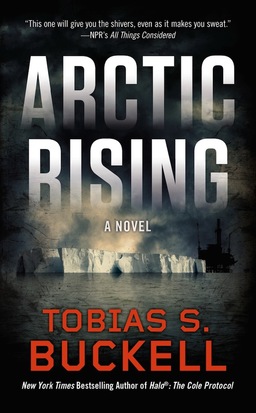 Everything is linked. Negative feedback loops abound. Rising temperatures melt more ice, which means less sunlight reflected back out of the atmosphere, which means more rising temperatures, which means melting tundras, which means newly exposed marshland and methane gas — 20 times more dangerous as a greenhouse gas than carbon dioxide — which means even higher temperatures, which mean strained crops and plant life, and warmer oceans already taxed by increased acidity thanks to increasing carbon dioxide levels, which means stressed sea-life and disrupted ocean currents that buffer equatorial temperatures.
Everything is linked. Negative feedback loops abound. Rising temperatures melt more ice, which means less sunlight reflected back out of the atmosphere, which means more rising temperatures, which means melting tundras, which means newly exposed marshland and methane gas — 20 times more dangerous as a greenhouse gas than carbon dioxide — which means even higher temperatures, which mean strained crops and plant life, and warmer oceans already taxed by increased acidity thanks to increasing carbon dioxide levels, which means stressed sea-life and disrupted ocean currents that buffer equatorial temperatures.
All this and I didn’t even bring up rising sea levels!
Drowned cities. Drowned island nations. Global food and water shortage. Broken infrastructure. Sounds an awful lot like a sci-fi novel, doesn’t it? Unfortunately, it’s already happening. Dystopias and post-apocalyptic landscapes are slowly becoming our reality, and SF writers, the very ones who should be providing the visionary framework for saving ourselves are stuck in a rut, so much so that literary and mainstream authors have jumped into the game and spawned a new sub-genre of literature: Climate Fiction, or Cli-fi for short.
The term cli-fi was coined by freelance reporter Dan Bloom to describe an obscure 2007 dystopian novel, but the term slowly caught on, eventually getting used in a recent NPR segment and turning into a bit of a buzzword. Columnist Rodge Glass of The Guardian explains in a recent article that “in recent months the term has been used increasingly in literary and environmental circles…”
Like many labels for sub-genres of literature, cli-fi varies depending on whom you ask, but at its core cli-fi is simply a marketing term used to describe warning tales about climate change. This includes work from some traditional SF authors, but because it’s a term adopted by a more general audience, it tends to include authors outside the genre who use the trappings of SF, as well as slipstream authors like Margaret Atwood. Atwood, in fact, is a perfect example of a cli-fi author. Her 2009 novel, The Year of the Flood, is a sampling of the best the genre has to offer.
Despite the marketing and Internet buzz, this “new genre” functions in much the same manner as any other post-apocalyptic SF. As Glass explains, “[The] best cli-fi novels allow us to be briefly but intensely frightened: climate chaos is closer, more immediate, hovering over our shoulder…” Other titles lumped into the cli-fi category aren’t so literarily ambitious, and instead use climate change as a plot device in the stereotypical mainstream thriller format. Regardless, the message and the end result is the same — a wider audience is getting exposed to the idea of imminent climate disaster, which is encouraging.
But really, climate change reaching pop culture isn’t going to revolutionize the way we live our lives. Hollywood’s The Day After Tomorrow and Al Gore’s An Inconvenient Truth were both bigger, more expensive, pop-culture sensations than any cli-fi novel and neither toppled the fossil fuel industry or got money out of politics. That’s the problem with nearly all contemporary climate SF, cli-fi, non-fiction, and movies: they’re redundant, and at best they function to warn us and make us question lifestyle choices we have little ability to change because they are so entrenched in our modern way of living.
Good SF can do more. Should do more. SF should aim to inspire innovation, and destroy the social and technological paradigms that are leading us to ruin. A few brilliant minds — Neal Stephenson foremost among them — are on the right track, but risk failure of their own due to conforming to the longstanding paradigms of SF culture.
Project Hieroglyph
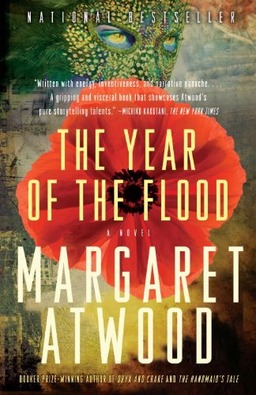 At a 2011 conference called Future Tense, SF author Neal Stephenson complained to the audience about the lack of progress in the US space program, the development of clean energy, and the modern world’s inability to accomplish “big stuff” in general. To his surprise, Michael Crow, president of Arizona State University, put the onus back on Stephenson and the rest of the SF community for not writing anything that could inspire modern engineers and scientists. Stephenson had to concede the point.
At a 2011 conference called Future Tense, SF author Neal Stephenson complained to the audience about the lack of progress in the US space program, the development of clean energy, and the modern world’s inability to accomplish “big stuff” in general. To his surprise, Michael Crow, president of Arizona State University, put the onus back on Stephenson and the rest of the SF community for not writing anything that could inspire modern engineers and scientists. Stephenson had to concede the point.
“The techno-optimism of the Golden Age of SF has given way to fiction written in a generally darker, more skeptical and ambiguous tone,” he wrote in his game changing article on the incident, “Innovation Starvation.” The experience inspired Stephenson to create Project Hieroglyph in conjunction with ASU, a project intended to get SF writers and other innovators to work in conjunction with scientists and engineers. The name comes from the Hieroglyph Theory, which Stephenson describes better than I:
Good SF supplies a plausible, fully thought-out picture of an alternate reality in which some sort of compelling innovation has taken place. A good SF universe has a coherence and internal logic that makes sense to scientists and engineers. Examples include Isaac Asimov’s robots, Robert Heinlein’s rocket ships, and William Gibson’s cyberspace. As Jim Karkanias of Microsoft Research puts it, such icons serve as hieroglyphs — simple, recognizable symbols on whose significance everyone agrees.
The project aims to inspire rather than frighten readers with dsytopic and apocalyptic visions. So far, the project has resulted in the creation of an online community (http://hieroglyph.asu.edu/) where scientists, engineers and SF authors can kick around ideas and begin to develop innovative projects. In addition, an anthology of original short fiction is tentatively slated to be release sometime this year. The project is ambitious and, according to the Hieroglyph website, is intended to “provide not just an idea for some specific technical innovation, but also to supply a coherent picture of that innovation being integrated into a society, into an economy, and into people’s lives.”
This change in thinking Stephenson’s project has sparked is exactly what the SF community and the world at large needs. Stephenson and his cohorts have taken aim at overcoming entrenched systems that prevent innovation, particularly our risk-adverse corporate culture — the environment in which most scientists and engineers work — and to reinventing the way we live, rather than simply perfecting current technology. This mindset of breaking away from our current ways of living and opening up new boundaries for innovation is the missing link SF needs to move forward. Unfortunately, Project Hieroglyph is missing an important link of its own.
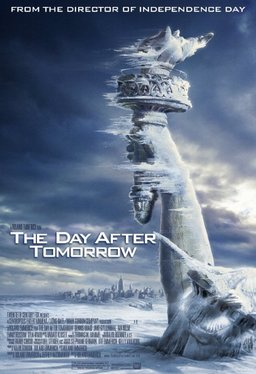 So far, the project has been addressing the wrong problems thanks to being fixated on traditional SF tropes, namely space exploration. The first two collaborative projects Project Hieroglyph is developing are a hugely tall tower design (to more easily launch spacecraft, among other things), and devising a way to send robotic 3D printers to the moon to build habitable buildings. Both projects are worthwhile endeavors and are bound to result in tangential technologies that can help in small ways to address the problems of climate change, but they don’t directly address the most important issue at hand. Space exploration will be a moot point if modern civilization collapses. Addressing climate change trumps all other concerns. Otherwise, we’re facing a truly apocalyptic collapse of human civilization before the turn of the century.
So far, the project has been addressing the wrong problems thanks to being fixated on traditional SF tropes, namely space exploration. The first two collaborative projects Project Hieroglyph is developing are a hugely tall tower design (to more easily launch spacecraft, among other things), and devising a way to send robotic 3D printers to the moon to build habitable buildings. Both projects are worthwhile endeavors and are bound to result in tangential technologies that can help in small ways to address the problems of climate change, but they don’t directly address the most important issue at hand. Space exploration will be a moot point if modern civilization collapses. Addressing climate change trumps all other concerns. Otherwise, we’re facing a truly apocalyptic collapse of human civilization before the turn of the century.
What Project Hieroglyph members — what other SF writers, myself included — need to be addressing is how to reinvent the way human civilization works. We need revolutionary clean energy, something that makes fossil fuels and our energy infrastructure obsolescent. We need to reinvent how we grow and transport our food, and where we get clean water from. We need to reinvent how we travel for work and pleasure. We need to evolve beyond our economic and political systems that are based upon wasteful consumerism and perpetual economic growth. Earth can’t continue to support an increasing human population, certainly not the way we’re living today. SF writers need to step up in a big way.
“In general, I’m very glad to see this happening,” Bill McKibben replied via e-mail when asked his thoughts on Project Hieroglyph and the increasing amount of climate change themed fiction recently. “Environmentalists have for too long relied on appeals to that side of the brain that likes bar graphs and pie charts. It’s good to see the rest of the human mind, and heart, being brought to bear on our most pressing issue.”
McKibben’s optimism is encouraging, and if the SF community is truly going to help humanity survive the defining crisis of our age, we’re going to have to do just what he says: utilize the full force of our minds, hearts, and souls to tackle the problem. The world isn’t going to change on its own. SF writers need to imagine a future world of human prosperity so the rest of the world can too.
Annotated Bibliography
DeNardo, John. “A Flood of Science Fiction.” Kirkus Reviews. August 8, 2012. This short article highlights the most prominent SF dealing with global warming and rising sea levels.
ECOFYS. “World GHG Emission Flowchart.” This chart provides a striking visual breakdown of where greenhouse gases come from, utilizing 2010 data from IEA, the Joint Research Centre, CIAC, and the Global Carbon Project.
Evancie, Angela. “So Hot Right Now: Has Climate Change Created a New Literary Genre?” NPR. April 20, 2013. A short article chronicling the rise of the new literary genre. Link below also provides streaming audio of the original NPR broadcast.
Glass, Rodge. “Global warning: the rise of ‘cli-fi’.” The Guardian May 31, 2013. Similar to the above article, this article chronicles the rise of cli-fi from a broader, less literary perspective.
Hansen, James, et al. “The New Climate Dice: Public Perception of Climate Change.” NASA, Goddard Institute for Space Studies. August 2012. This article details all the climate data showing an increase in global temperature over the last several decades and suggests the “dice” metaphor as a way to explain to the general public the outcome of global warming: increased, more severe weather incidents.
IPCC. Climate Change 2014: Mitigation of Climate Change. A comprehensive report with the most recent scientific data and mitigation policies put forth by the Intergovernmental Panel on Climate Change. John Upton at Grist.org does a good job of analyzing and breaking the report down into digestible pieces. Start here.
McKibben, Bill. “The Reckoning.” Rolling Stone. Issue 1162, August 2012. The popular article that drove home the notion that we’re already experiencing the effects of global warming. In addition to laying out the three numbers mentioned herein, the article takes a closer look at the fossil fuel industry and how we can go about taking the profits out of polluting the planet.
McKibben, Bill. “The Fossil Fuel Resistance.” Rolling Stone. Issue 1181, April 2013. This article profiles the leaders in the environmental movement to stem global warming, and details 350.org’s fossil fuel divestment campaign.
McKibben, Bill. Eaarth: Making a Life on a Tough new Planet. Times Books. New York, 2010. This book lays out the staggering amount of data proving human activity has led to global warming, argues that the effects are going to be worse than early climate models predicted, and posits a strategy for adapting to a new world: abandoning the notion of perpetual economic growth and moving toward sustainable localized communities.
McKibben, Bill. “What the warming world needs now is art, sweet art.” Grist.org. April 22, 2005. “Art in a Changing Climate.” Grist.org. August 6, 2009. These two opinion pieces lay out McKibben’s case for why art and literature are important in teaching us to adapt to a changing world. Second piece here.
NASA. “Explaining Rapid Climate Change: Tales from the Ice.” A good overview of how scientists are able to analyze Arctic ice core samples to draw a picture of how climate has changed over the last 800,000 years and conclude that human activity has increased recent rising global temperatures.
Sheppard, Kate. “New Report Warns of ‘Cascading System Failure’ Caused by Climate Change.” Grist. A quick article that summarizes the newest National Climate Assessment, which in short says that extreme weather events will likely lead to a chain reaction of infrastructure failures throughout the United States.
Stephenson, Neal. “Innovation Starvation.” Available at various sites online, this article is Stephenson’s response to his experience at the 2011 conference, Future Tense, and lays out the philosophy behind Project Hieroglyph.
WorldWatch Institute. State of the World 2012: Moving Toward Sustainable Prosperity. Island Press. Washington, 2012. This installment of the 20+ year running series lays out plans for a sustainable economic model, as opposed to the current model, which is predicated on rampant consumerism, squandering natural resources, and perpetual economic growth. State of the World 2011 from W.W. Norton & Company lays out models for sustained agriculture. Ironically, the most innovative, cutting-edge advances in agriculture are taking place in poor 3rd world countries.
“SF should aim to inspire innovation, and destroy the social and technological paradigms that are leading us to ruin.”
‘Should?’
There are an infinite number of things SF can do. There are infinite means of artistic expression. Let each author follow his or her own muse. The possibilities of SF- of any ‘type’ of literature- are endless. Let us not proscribe what writers ‘should’ do.
A bit bewildered by this post. All I can say is that I’m glad I don’t write SF–what a burden this poster is pushing on such writers!
@Golgonooza
There are nonormative “shoulds” for writers? Really?
@Golgonooza, you are absolutely right. There is always virtue in making art and literature of all sorts, even in times of turmoil, but the SF/F community can do better when it comes to thinking deeply about climate change. And the truth of the matter is, we NEED to do better if we’re going to maintain a world where we still have the luxury to create literature and art. So as a writer in my own right, my muse compels me to make this call to action.
@James McGlothlin, thanks for your comment, and I agree. I thought long and hard about this article and whether I should publish it or not, both before and after researching and writing it. Ultimately, I decided climate change isn’t something I feel we can continue to push to the back burner simply because it’s scary. Addressing climate change is a burden. And it will continue to be a burden on every single person on this planet. If more creative minds can feel the weight of this burden and actively address it, all the better, because, really, hasn’t the best literature, art, and philosophy been created when creative minds are burdened with the threat destruction?
@James McGlothlin
My comment was specifically in response to the quoted statement. My point was that fiction need not deal with ‘topical’ issues such as climate change in order to be ‘relevant.’ The human heart in conflict with itself is always relevant.
As for normative ‘shoulds’ for writers- that might give me a headache.
Golgonooza: “As for normative ‘shoulds’ for writers- that might give me a headache.”
?
This pedantic squabbling about “should” is missing the point a bit. The human heart and conflict within itself is only relevant if we as a species continue to survive.
Alarmist? Perhaps. But that’s the worst case scenario we’re talking with climate change. And that’s not conspiracy theory, this is what the vast majority of scientific data suggests.
Climate change is not a “topical issue” the likes of which appears on an after-school special. It’s something that will, unchecked, change the world we live in a variety of ways, few of them positive.
It’s not as spec-fic readers or writers that we should be concerned, but as human beings.
@ajoker
No one here (so far, at least) disputes the reality and significance of climate change. However, I am unsure what exactly your comment is suggesting about the role of the writer as it relates to climate change.
Are you saying that every piece of literature must now deal with climate change in order to be meaningful?
Is the human heart in conflict with itself no longer relevant due to the threat of climate change?
“The pinch, of course, is keeping that oil, gas and coal in the ground, but with an estimated value of $27 trillion dollars, there’s no chance the fossil fuel industry is going to give up their investment.”
“We need revolutionary clean energy, something that makes fossil fuels and our energy infrastructure obsolescent. We need to reinvent how we grow and transport our food, and where we get clean water from. We need to reinvent how we travel for work and pleasure.”
You’ve succinctly delineated the most under-appreciated issues of the century, climate change notwithstanding. It is a pity that the Hieroglyph Project (and the general public) lacks direction regarding these items.
Regrettably, a literal cornucopia of tangible solutions lay dormant in over 100 years of patents that have been shelved and totally forgotten; their originators rewarded with obscurity.
Randall Garrett addressed the problem in a most intriguing way when he wrote “Damned if you Don’t” which appeared in the May 1960 issue of Analog. Of all the excellent science fiction I’ve read over the years, no story has stayed with me quite like that one, although in reality it often enough ends a little more bleak than Garrett suggests in his story.
A perusal through the US patent office is mute testimony to Garrett’s imagined depiction which actually has occurred many times over in our own reality.
“If SF helps people become aware, even by associating fictional stories with real life events, that’s a good thing.”
And it’s precisely what we need.
“Noise Level” (1952) by Raymond F. Jones; is a brilliant story about scientific innovation that will always ring true, but Randall Garrett got as close as I’ve ever seen an SF author get in “Damned if you Don’t” to showing what has really been going on to keep us where we are now.
I’ll go out on a limb and say it just might be the most relevant work of SF ever committed to print.
@CloaknSaber, thanks for your insight and reading recommendation. I’ll be sure to dig up “Damned if you Don’t” and read it carefully.
@Golgonooza
“Are you saying that every piece of literature must now deal with climate change in order to be meaningful?”
Is that a serious question? I took Mr. Calcaterra’s essay to mean that there should be a larger body of work, that some writers should be raising awareness with their prose and imaginations. Your instant and constant slippery slopage only obfuscates this issue. Please retire the pedantry!
A couple of updates:
1) SF/F author and editor Kathryn Cramer reached out to me via Twitter to let me know that the Hieroglyph fiction anthology will be coming out in September from Harper Collins, and will include a story dealing with climate change from Vandana Singh. It should be a great anthology.
2) The Randall Garrett story that @CloaknSaber mentioned above appears to be in the public domain (or at least, Project Gutenberg has taken it to be so) and you can find it free online in e-book and html formats here: http://www.gutenberg.org/ebooks/24064
I haven’t gotten a chance to read it yet, but have sent it to my Kindle to do so tonight.
[…] Can SF Save the World From Climate Change? […]